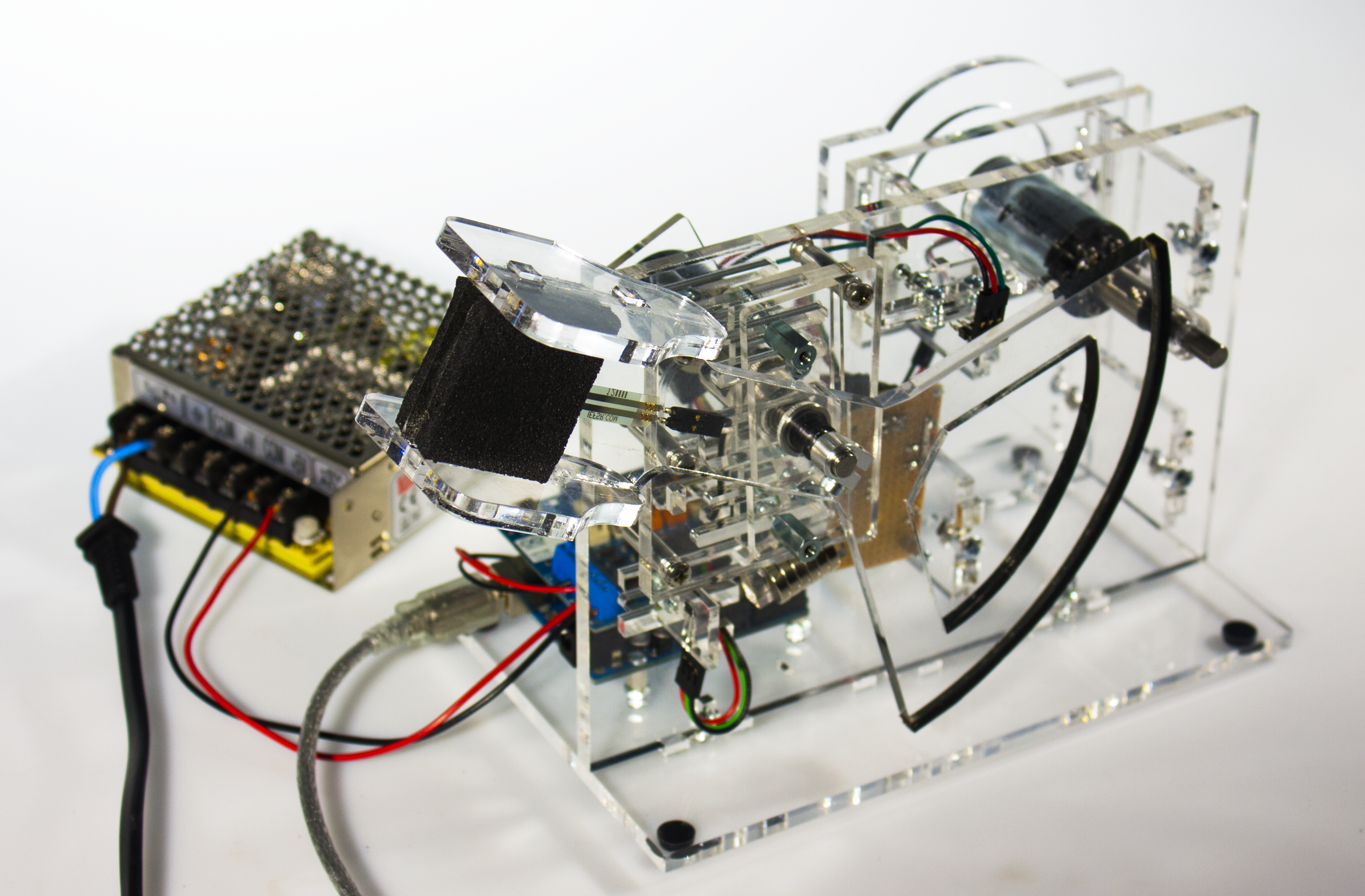This is a Haptic Paddle designed for an interactive media design course at the University of Michigan. The motivation was to build an instrument that provided haptic feedback to the user, a quality that is inherent in acoustic instruments, and devoid in most electronic music instruments and controllers. The specific design was based on the Stanford University's Hapkit. It successfully simulates multiple detents by selectively applying force against and with the users movement using a motor. A Force Sensitive Resistor (FSR) allows user to control how much the motor pushes back, which is simultaneously coupled to the intensity of a corresponding sound impulse.
A screen shot of the virtual pendulums and blocks generated in Jitter. Collisions in this virtual system were parsed in Max/MSP and then sent to Ableton Live via MIDI to trigger audio samples.
Since the system simulates a physical, or haptic force upon the user, it seemed appropriate that the user would in turn apply a simulated force upon a virtual system for determining the audio. One such system involves four virtual pendulums, modeled using Jitter's collection of physics objects, are evenly spaced vertically, and swing between two blocks. Four corresponding points on the physical paddle apply energy to the pendulums, increasing in intensity as the user applies more pressure to the paddle (the FSR). The intensity of each trigger maps accordingly to the amplitude of sonic impulses. Collisions detected between the pendulums and two bounding blocks on either side control the triggering of an additional set of audio samples.




